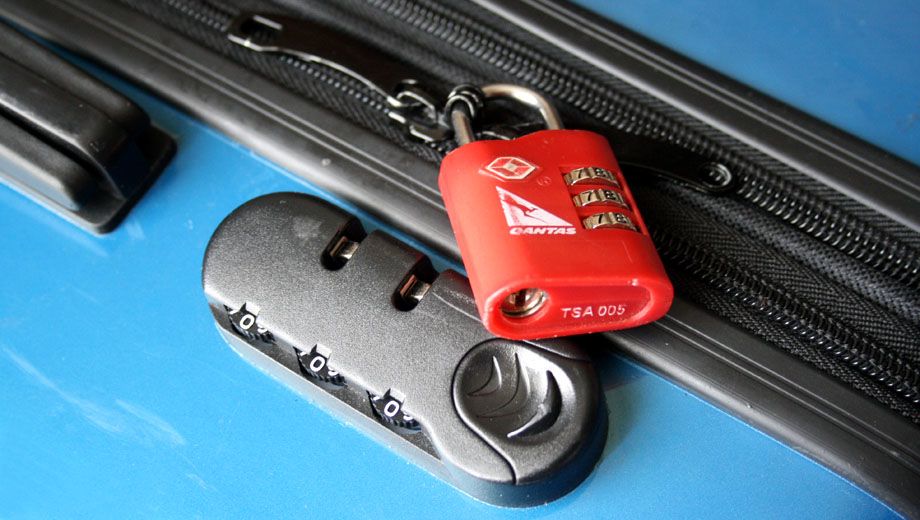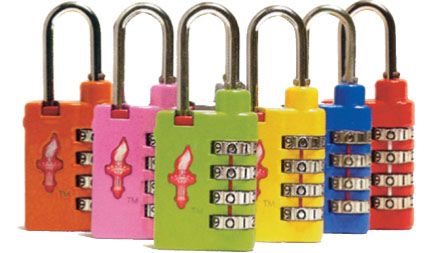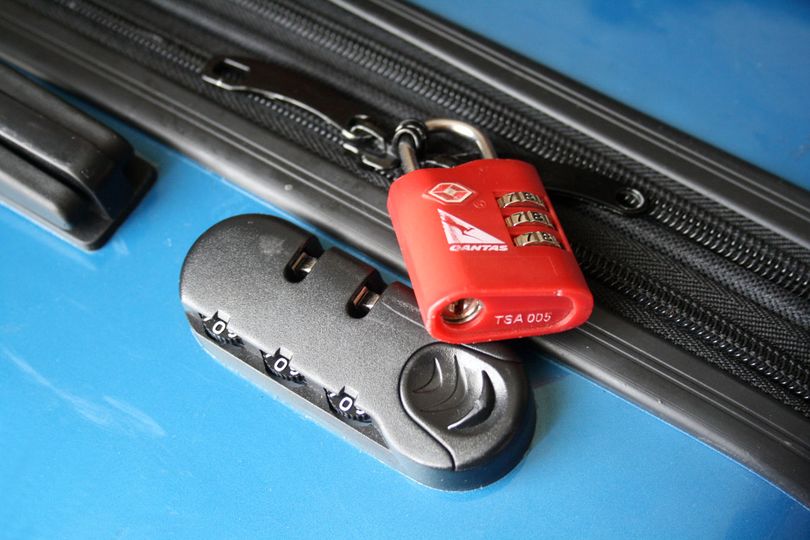Flying to the USA or Canada? Save your suitcase: grab a TSA lock

Locking your luggage is a great deterrent to would-be thieves, but if you’re travelling to the USA or Canada, you’ll need to use a special type of lock to secure your bag – otherwise the TSA or CATSA can and will cut it off or even break open your checked baggage if it needs to be examined.
You won’t be paged or given the chance to hand over your key or combination: you’ll only find out at the other end, so here’s what you need to know to keep your bag in one piece, even if it’s selected for a closer inspection.
TSA-friendly locks: Travel Sentry, Safe Skies
Specially-designed padlocks and built-in luggage locking mechanisms allow travellers to secure their possessions while also permitting the TSA to open the bag – these are known as Travel Sentry and Safe Skies locks.
In short, passengers with these locks can still set their own combinations and/or use their own keys, yet the TSA (USA) and CATSA (Canada) retain a set of master keys at every airport and can use these to unlock the bag rather than cutting off the padlock or destroying the locking mechanism.
When shopping for luggage or even just a set of locks, look for the red diamond (Travel Sentry)…
… or the red torch (Safe Skies):
These symbols are easily recognised by TSA agents and highlight that the bag or lock can be opened easily and without damage.
If you’re concerned about belongings disappearing from your bag, some manufacturers also include a ‘TSA indicator’ on the lock – usually a square that changes colour when a bag has been opened using a TSA key, which can only be reset when a passenger opens their bag in the usual way.
Update: This article previously referred to 'Safe Skies' as 'Friendly Skies' in error. The correct company name is 'Safe Skies'.
Using older luggage with non-TSA locks
You’ll find TSA-compatible locks on most new luggage, although many older bags aren’t equipped with the technology – nor are most of the cheaper, generic models of luggage.
To see whether your bag is TSA-friendly, look for that red diamond or torch on the lock. In this example, the bag’s locking mechanism doesn’t belong to either Travel Sentry or Safe Skies, and risks being broken open by security staff if an inspection is required:
Rather than buying a completely new bag, just avoid using the built-in lock when travelling to North America and loop a TSA-compliant padlock through the zipper:
Your bag will still be locked, and while the solution isn’t perfect, a $20 padlock sure beats a spending hundreds of dollars to replace an otherwise-fine suitcase, or worse, a broken bag waiting for you on the baggage carousel.
Also read: What does 'SSSS' on your boarding pass mean?
Follow Australian Business Traveller on Twitter: we're @AusBT




Qantas - Qantas Frequent Flyer
10 Jan 2013
Total posts 698
Better yet, travel light, use carry-on, and avoid your baggage being lost or misplaced (a problem in the US, even if in First) or damaged through rough handling.
Qantas - Qantas Frequent Flyer
10 Jan 2013
Total posts 698
Clothes are so cheap in the USA, not to mention more plentiful in sizing and length variations, that you really can't go wrong if you find you need to top up your wardrobe (you can always mail them back home if needs be).
25 Feb 2015
Total posts 1
Thanks for that story. But based on personal experience, having a TSA-friendly lock doesn't guarantee you having the lock on your suitcase when it arrives. Recent trip Sydney-Dallas-Orlando - all good. Orlando-Miami, 1 of 2 suitcases arrives with no lock. Columbia,SC-Dallas, the remaining TSA-"friendly" lock had disappeared. Either the TSA personnel couldn't find their master key, or they were too busy to bother and simply cut the locks off....
QFF
12 Apr 2013
Total posts 1559
I never bothering myself to put padlock on checked baggage – one can rip it open anyway. IMHO it is false sense of security. Just do not pack anything indispensable in checked baggage. However I wrap my baggage whenever I can, it prevent accidental opening and that is more often and more serious risk. Or one can use zip ties – cheap enough and easy to replace.
On side note I have curiosity – what TSA doing with hard cases that have built-in locks?
Qantas - Qantas Frequent Flyer
21 Aug 2014
Total posts 501
I bet most TSA agents at those airports will have duplicated those keys and then use it for their own gain. This just makes it easy for them, all they do is get the key from their pocket and open the bag, without leaving any trace. The locking will all still be in place.
Qantas - Qantas Frequent Flyer
21 Aug 2014
Total posts 501
I would do something like this if the airport I am going through has a bad history of TSA theft.
Qantas - Qantas Frequent Flyer
21 Aug 2014
Total posts 501
"These symbols are easily recognised by TSA agents and highlight that the bag or lock can be opened easily and without damage."
This is just a Green Light for them to know that they can probably steal the stuff easily and without trace.
Singapore Airlines - KrisFlyer
13 Jun 2013
Total posts 28
It's not clear what happens with older, hard shell suitcases with combo locks that don't have a red marker? May as well just leave the bag unlocked and hope they try to open it manually before taking a crowbar to it?
24 Apr 2012
Total posts 2424
If your hard-shell, non-zip bag doesn't have a TSA lock and you can't apply one manually, I'd suggest it's time to just buy a new suitcase that can be adequately locked without the risk of it arriving in pieces.
Air Canada - Aeroplan
28 Feb 2015
Total posts 122
Put my brand new TSA lock on my bag and checked it with Qantas in ADL. Wasn't there when I arrived in SYD. Same thing happened to my mother with a non-TSA padlock last year, same route, same airline. Someone at QF Adelaide with a lock fetish? Complained to Qantas, who didn't bother to reply.
Hi Guest, join in the discussion on Flying to the USA or Canada? Save your suitcase: grab a TSA lock